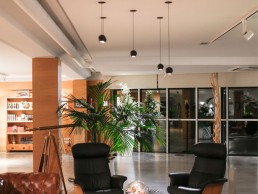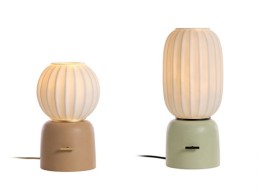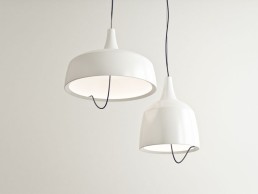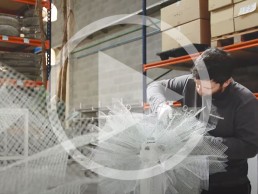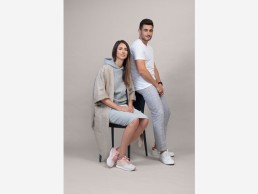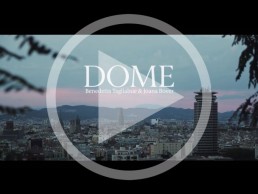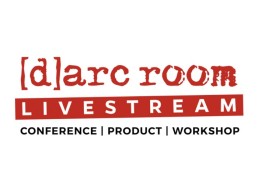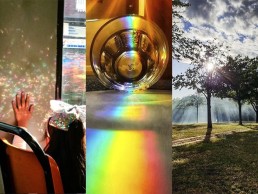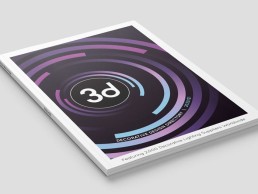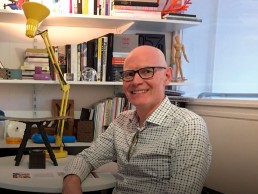Beneito Faure - Bora
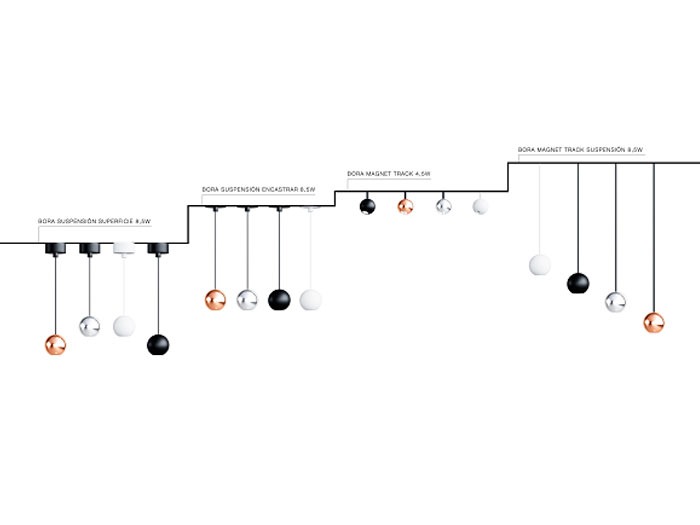
Bora is a new decorative lighting family with more than 30 different combinations available. From suspended to recessed, surface and magnetic rail, the Bora luminaire was born from the idea of creating a minimalist and versatile product that can be arranged in multiple configurations.
The Bora luminaire is made up of two different powers and sizes, with 4.5W and 8.5W, in the finishes white, matte black, chrome and rose gold and is available in colour temperatures of 2700K and 3000K, and its CRI> 93 offers excellent colour definition.
The Bora decorative light can be placed individually, in pairs or in groups, with the possibility of playing with its placement to create different atmospheres and effects.
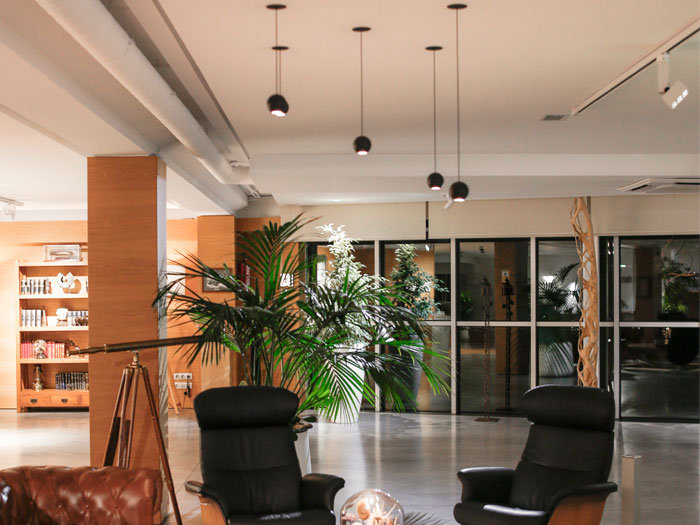
Carpyen Barcelona - Mei Collection

Mei table lamp, Mei suspension and Mei Movil pendants are soft and magical, taking us on a dreamy journey to oriental landscapes. Their generous contours are reminiscent of millions of lanterns shining of a warm light. A genuine companion to a muted atmosphere, the table lamp offers us a comforting and soothing light. The natural material of the porcelain endows Mei with a sensitive and gentle soul.
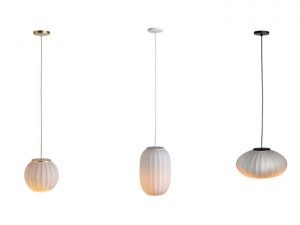
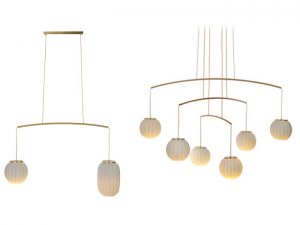
Luzfin - Aura Lamp
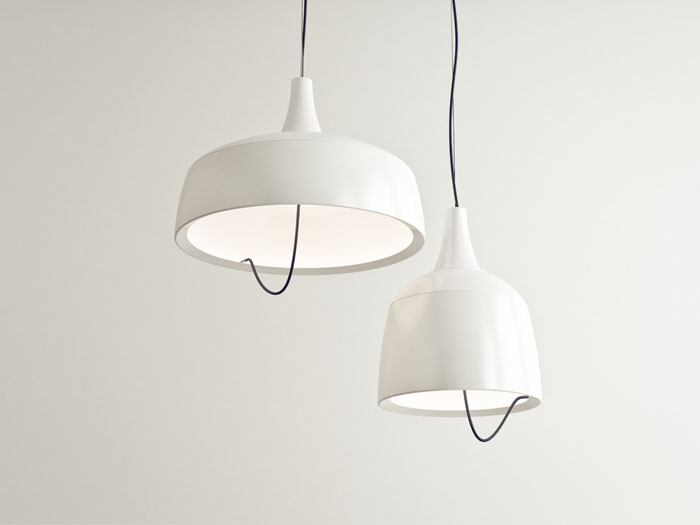
The Aura lamp is an aluminium extruded suspension lamp designed by Gauzak design studio and is available in customised colours. Aura is a lamp that collects the experiences of the multi-generational company and embodies a familiar, almost classic form. However, as a light source it exclusively uses LEDs, located in strip format along the perimeter of the hood.
A contrast is created between the materiality of its body and the lightness transmitted by its indirect lighting.
a by arturo alvarez - Fluo
Emotion, light and design come together in each of a by arturo alvarez's designs where, through high quality materials, organic and elegant shapes are sought. Its manual processes are charged with emotions that make each lamp unique. As if it were a vaporous fabric, the Fluo collection is made of painted galvanised mesh. The magic that is projected on the walls has led this design to win a Good Design award in 2009. Check out this video, which shows the process of making it.
www.a-emotionallight.com
Clara del Portillo
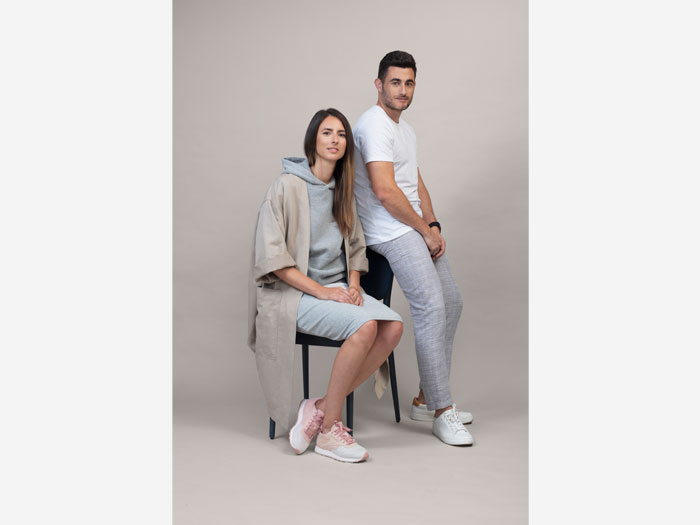
Design studio Yonoh was founded in 2006 by Clara del Portillo and Alex Selma in Valencia, Spain. The studio boasts a full portfolio of product, furniture and lighting design, working with numerous big names in the lighting industry, including Vibia, Bover, Flos, Foscarini, Zero and Louis Poulsen.
During its short career, Yonoh has acquired multiple industry awards such as Red Dot, iF design award and Wallpaper* Design Award to name a few.
Selma and del Portillo both have backgrounds as industrial designers and established solo careers before meeting in 2004 at a young designer’s exhibition. Fast forward to 2006 and their first collection was released under the collaborative Yonoh brand. Since, the pair have created numerous design collections across various disciplines, alongside their work as Associate Teachers at the Cardenal Herrera CEU University in Valencia, delivering workshops and lectures around the world promoting their work.
Acting Editor, Sarah Cullen sits down with del Portillo to find out more about her background as a designer and her work as a Partner at Yonoh.
“I’m from Valencia in Spain and studied Design Technical Engineering at the Cardenal Herrera CEU University. I was then an Erasmus student in Paris at the Strate College. That was a very enriching experience that made me grow as a person,” she says. “University made me fall in love with design. The ambience was great, and we had professional designers as teachers that made us love the profession.
“After finishing my studies and returning from Paris, I started working on different design jobs while I was preparing to present at a young designer’s exhibition in Valencia called NUDE. There is where Alex and I met and where Yonoh’s seed was planted. After that, we started collaborating on some projects and then in 2006 we started our own studio.”
del Portillo’s career and interests have never strayed from the design world, with her first official job in Paris working for a company that worked on shop windows and ephemeral furniture design for perfume and luxury cosmetic brands. “After I came back to Spain where I was working on furniture design, although I didn’t stay in that job for long. Even if the brand was great and I was loving the furniture, it wasn’t really my thing to be working in a shop,” she says. “I started to work with furniture manufacturing here in Valencia, where I have learned a lot about the technical side of manufacturing. It was an enriching job where I based myself for nearly four years, up to the point of starting Yonoh with Alex.”
When asked about where inspiration strikes and what her influences are in her design work, del Portillo explained how it typically comes from day to day life but that traveling sparks it the most. “Knowing different cultures and understanding that not all people live like you makes you look at things differently,” she says.
Yonoh is a multidisciplinary studio that produces a varied portfolio of designs stretching across different industries from furniture to products. They have worked with numerous big brands in the industry, including Vibia and Bover in Spain, Flos and Foscarini in Italy and Zero and Louis Poulsen across Europe. “We have had the chance of working with some great lighting companies across the world,” she adds.
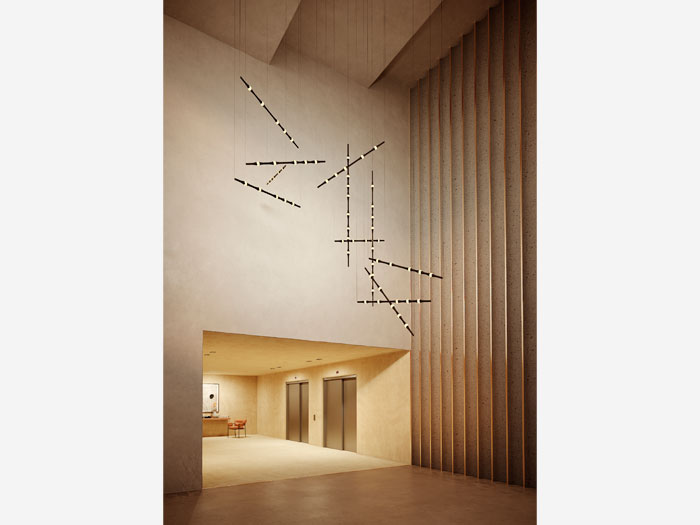
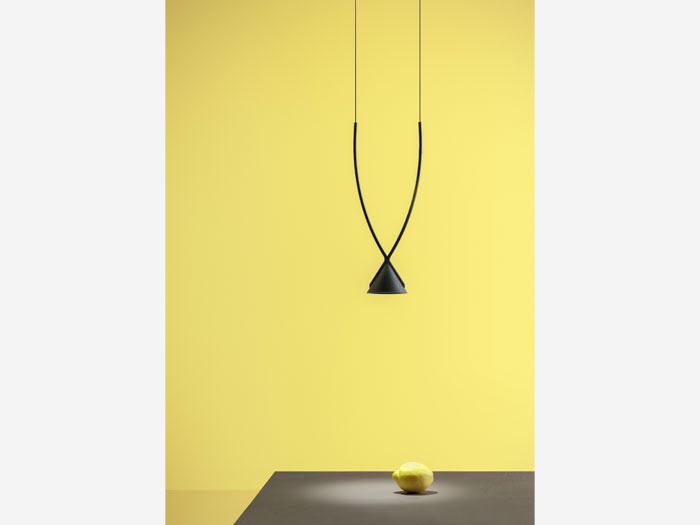
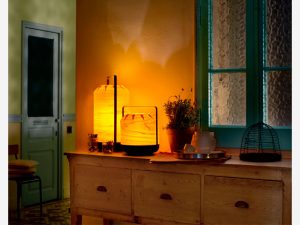
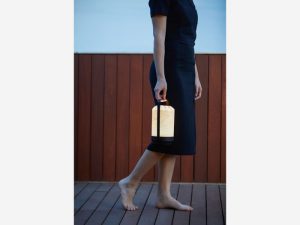
When asked about lighting, it is clear this design process plays a fundamental role in del Portillo’s repertoire. “Working with light is different to working on any other product because they are objects that are sometimes on and sometimes not,” she says. “We have to think about it and make the lamp work well in both conditions.” When referencing what lighting should bring to a space, del Portillo adds that “the most important aspect is to create an ambience with light. It really depends on which space you’re illuminating but creating a comfortable ambience for us is the most important part.
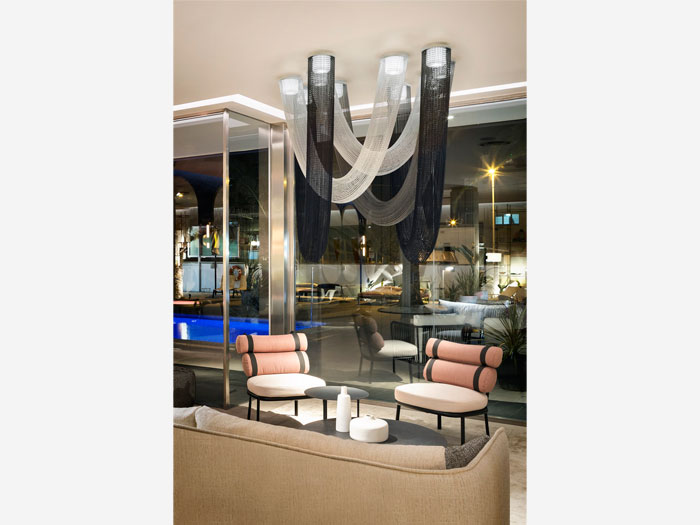
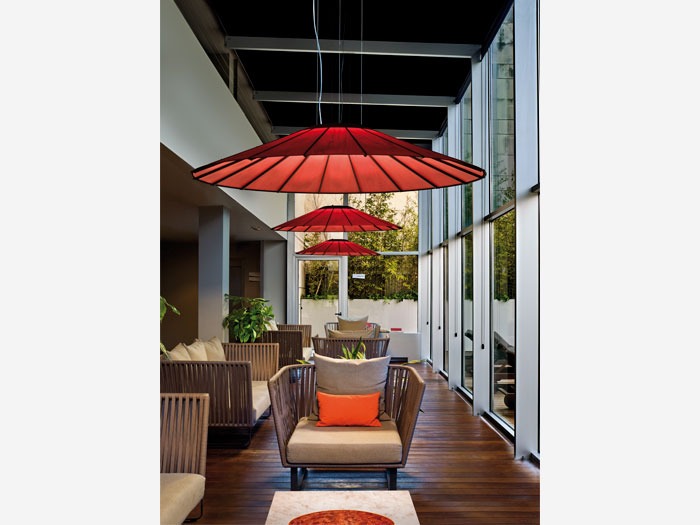
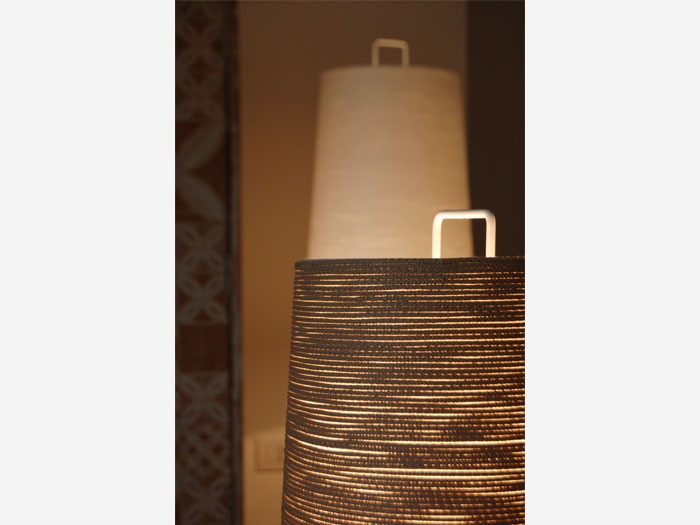
“Architectural and decorative lighting are complementary, and both are necessary for a perfect ambiance. Decorative is more important in interiors with its main goal to create a relaxing and restful space. Architectural is more for hospitality and contract use, but we always find a mix of them in every project.”
As a young studio, the pair approach each project with fresh eyes and deliver an end result that both features a subtle design style as well as a solution for their client. “I think we have a little design style that we try to adapt for each client. When they call us, it is usually because they like what we do. But, at the same time they want something that fits with what they already have. All our projects are influenced by all of our other projects we are doing or have done, as well as the collection of companies that we have worked for. Everything is mixed.”
Further to the mixed approach to each product and client project, del Portillo has also observed that the current trends across interior design both in Spain and internationally is the idea that having no trend is the trend. “Nowadays, everything is fine – every style, every mix. We have minimalism and maximalism and then industrial and brutalism, and they all fit together. I think that’s the trend – no trend,” she adds.
Next in the pipeline for the design duo is a collection of furniture and lighting for both indoor and outdoor applications. In the early stages of planning and designing, del Portillo and Selma both factor in and question what is more important for the design's purpose. “Shape is nothing without function. Design wouldn’t be design without function, that’s the most important.
“We always say that a lamp must be beautiful when switched off, but even more beautiful when switched on.”
Both del Portillo and Selma are young designers with a young studio, but both bring a well established history of design knowledge that has set them in good stead to tackle all projects that cross their paths. “The most rewarding part about working in design is to see that people like what you have done, they buy it and use it. Walking around and seeing your products in a shop window or used in a bar or hotel…That’s really exciting!” concludes del Portillo.
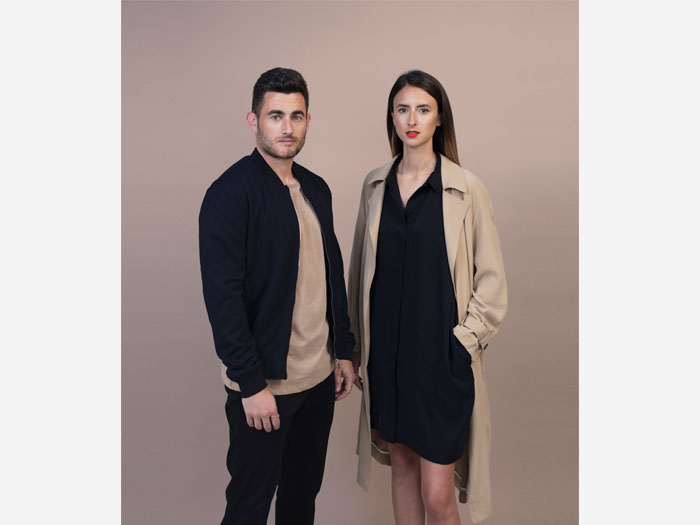
Bover - The Dome Collection
[d]arc room livestream launched

(UK) - Global virtual conference and exhibition for lighting design will take place on 16-18 September. First raft of speakers announced.
Following the cancellation of [d]arc room in London this year, organisers [d]arc media has launched [d]arc room livestream, an online global lighting design multi-track conference and exhibition for specifiers, designers and suppliers in the lighting industry.
The online event will take place on the 16th, 17th and 18th September 2020 when the on-site event in London was due to take place.
Following a Call For Papers, confirmed international speakers so far include Gabriele Chiave / Marcel Wanders (Netherlands), Pallavi Dean / Roar (UAE), Greg Keffer / Rockwell Group (USA), Paul Bishop / Bishop Design (UAE), Rikus De Kock / HBA (USA), Emilio Hernandez / Nulty (UK), Kai Piippo / Light Bureau (Sweden), Kaoru Mende / LPA (Japan), Kit Cuttle (New Zealand), Durham Marenghi (UK), Keith Bradshaw / Speirs & Major (UK), Dan Lister / Arup (UK), Brett Anderson / Focus Lighting (USA), Emad Hasan / The Lighting Practice (USA), Emrah Ulas / Steensen Varming (Australia), Monica Lobo / LD Studio (Brazil), Sakina Dugawalla-Moeller / Light.Func (UAE), Regina Santos / Godwin Austen Johnson (UAE), Patricia Lopez / Emaar (UAE), Claudia Paz / Claudia Paz Studio (Peru), Paulina Villalobos / DIAV (Chile), Virginie Nicolas / Concepto (France), Kapil Surlaka / Light@Work (India), Barbara Horton / HLB Lighting (USA), Carla Wilkins / Lichtvision (Germany), Chiara Carucci / Tengbom (Sweden), Karolina Zielinksa-Dabkowska (Poland), Yah-Li Toh / Light Collab (Singapore), Ta-Wei Lin / CMA Lighting Design (Taiwan), Nathalie Rozot / Phoscope (USA), Sabine De Schutter / Studio De Schutter (Germany), Victor Palacio / Ideas en Luz (Mexico), Richard Taylor / Graphic Strategy (UK)… with more to be announced.
The conference is being curated by Light Collective with the Call For Papers still being open for potential speakers on www.darcroom.com. The deadline to apply is 17th July.
Exhibitors will be able to show products and videos on their virtual 'booths' and will also be able to engage with attendees via group chats and 1-to-1 video meetings.
Paul James, Managing Director of [d]arc media, commented, “Obviously we were disappointed to have to cancel this year's [d]arc room in London but it was entirely necessary and understandable. [d]arc room livestream now gives us an opportunity to hold a global educational event with networking opportunities for attendees and sponsors. We are very excited about this new way of connecting until things hopefully return to normal in time for [d]arc room 2021 in London.”
Lighting suppliers who are interested in being exhibiting sponsors can contact [d]arc media for more information.
In Conversation With Bianca Yousef, 74
In this next instalment of [d]arc thoughts, [d]arc media's Assistant Editor, Sarah Cullen, sits down with Bianca Yousef, Associate at interior design studio 74. In this video, they discuss how decorative lighting was integrated into the project Symons House student accommodation in Leeds, UK - a new, sophisticated student living space recently completed by 74. www.weare74.com
Video edited by Assistant Editor, Sarah Cullen.
Music from bensound.com
Nulty announces Light Up Your Lockdown winners
(UK) – Photo competition asked participants for “inspirational moments of light”.
Light has often been cited as a symbol of hope with the power to unify people. At a time when we’re all searching for ways to be optimistic, Nulty encouraged us to look to light for inspiration, launching a photography competition on Instagram called “Light Up Your Lockdown”.
The architectural lighting consultancy invited people to seek out and capture inspirational moments of light through a camera lens, whether this be a beautiful shaft of light across the wall or floor in the home, or the way that light filters through a tree on a daily walk, the idea was to share personal experiences of light, together.
Entrants were asked to take a photograph of light that expressed how they felt, and share it on Instagram using @nultylighting and #lightupyourlockdown. Entries were then judged by the Nulty team, and the three successful participants were announced this week. Below are the winning entries, along with Nulty’s comments on the images.
Winners

“The team loved this photograph because it encapsulates a child playing with light in a pure and innocent way. It instantly stood out as a winner for us because it’s a really personal moment with light, but also because children have missed out on so much during lockdown by not being able to go to school or play with friends.”

“We were all in agreement that the composition of this photograph is incredible, especially the way that the photographer has captured a visual spectrum of light. The shot is even more impressive when you consider the added symbolism of a rainbow and light as a unifying medium."

“Outside space has been so precious to us all during the lockdown, so the way that this photographer captured the magnificence of daylight in all its splendour really resonated with us all. It’s a wonderful example of someone sharing a personal moment with light during the lockdown.”
The three winning entrants all received a Mathmos Lava Lamp.
For more information on the competition, click here.
3D 2020/21 Call for Submission
(Global) - The Decorative Design Directory (3D) is darc magazine's annual worldwide listings edition for the decorative lighting industry.
3D features a comprehensive directory of decorative lighting manufacturers and distributors. Available as a printed publication and in digital format, this directory is a valuable tool for those involved in lighting specification - from architects to lighting designers and interior designers.
In this year's directory, editorial coverage will include a special focus on the Women in Lighting project that celebrates its first birthday in 2020. Managing Editor Helen Ankers worked closely with Sharon Stammers of Light Collective and Sharon Maghnagi of formalighting to create a mini series of Women in Design profiles, which will include DH Liberty; Alison Smith, Nulty Bespoke ; Renee Joosten, iCRAVE; Lindsey Adelman; Pallavi Dean, Design By Roar ; and Clara von Zweigbergk, to name a few.
If you would like to nominate yourself or a female colleague in the design industry for potential inclusion in this Women in Lighting feature, please contact Helen Ankers: h.ankers@mondiale.co.uk
There will also be an exclusive profile on These White Walls - an all female led interior design studio in the UK and an overview of products launched in the summer of 2020 and due to be launched in 2021.
Updates or amendments to current or new listings in the 3D directory need to be submitted by 8 June, 2020 to 3d@mondiale.co.uk
Click here to see last year’s 3D.
In Conversation With Mark Major, Speirs + Major
[d]arc media presents the second instalment of our online TV series. Hosted by Managing Director Paul James, he discusses the world in lockdown and some career highlights with Mark Major from Speirs + Major.
Matt Kavanagh
London Designer Matt Kavanagh introduces a new style of sustainable lighting made from discarded NOS cannisters.
The NOS Sphere 228 chandelier is part of a range of upcycled lights created by London designer Matt Kavanagh; the idea for which came to him while cycling the streets of London. “I had been seeing these canisters littering the streets for ages and at the back of my mind thought it was an incredible waste of a beautifully engineered component,” Kavanagh tells darc. “Then, last summer there was a BBC news article about the clean up on the beach after Brighton Pride and how 150 sacks of the canisters had been retrieved. I decided it would be a fitting project to make them into something beautiful and luxurious. A celebration of the illicit!
“The initial idea for the chandelier came from a conversation with fellow designer, Rupert Matthews. The canisters have a ready made droplet shape that lends itself to a hanging chandelier. The reflective surface provides a mirrorball quality that plays to the strengths of the canister and it has just the right amount of scale and 'difficult' about it to produce a valuable and luxurious final piece, which is a nice contrast to what is a discarded item found in the gutter.”
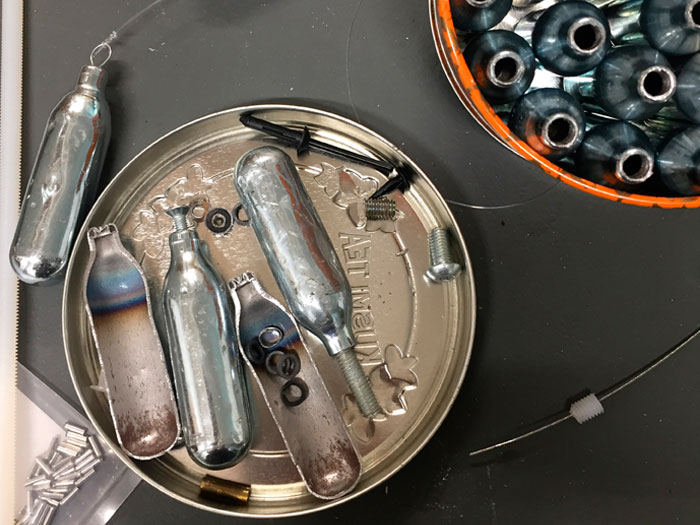
Sustainability and upcycling has been completely central to the NOS Sphere chandelier for obvious reasons as Kavanagh explains: “Sustainability is always part of the design process to varying degrees. I certainly take the responsibility of not contributing to landfill seriously and avoid projects that result in short-term use. Sometimes this is a material or production choice but it should also be an aim of designers to challenge the value of what they create in the first place so the life is extended.
“As designers, I believe we should be challenging whether a product really adds value in the first place. If you take the environmental argument to its logical conclusion, we should be making less stuff, so not designing products that don’t add value is a good start. We should also be considering material and production choice more carefully. 'Sustainability' is a fashionable label to attach to everything at the moment and there is a lot of lip service paid to this without looking at the whole picture.”
Kavanagh started his design journey at Southern Polytechnic in London where he gained a degree in engineering product design. “I was about 17-years-old when I first became aware of the Italian design movement Memphis," he says. "I was inspired, confused, provoked as it was so different to anything I’d seen. From that moment I was led to study design at college before travelling to Italy to work for Olivetti and then embark on a furniture design career that led me to work with many Italian manufacturers for over a decade.”
This early exposure to design led Kavanagh to set up a furniture, lighting and product design consultancy, which eventually formalised as design partnership Diplomat in 1999. At the same time, Kavanagh was also working with numerous companies in the retail sector - specialising in design, brand strategy and customer research - until eventually establishing retail consultancy Space 11 in 2011; today, he splits his time between both enterprises, working from his Deptford studios.
Kavanagh's design influences have, in his own words, always fluctuated: “On the one hand I was drawn to rule breakers who tore up our conception of how to behave as designers. Makers like Ron Arad, experimenters like Geatano Pesce or the poet of light himself; Ingo Maurer, reminded me to look beyond what’s currently in the landscape. But then, my engineering training would love the iconically simple designs of Achille Castiglioni and the paired down simplicity of Alberto Meda, who was able to combine efficiency and beauty into a perfectly distilled solution.
“I love to design, but what I’ve found most rewarding over the years is meeting and collaborating with bright minds and skilled hands, from clients to fellow designers to manufacturers and crafts people. I constantly feel I’m learning from experts around me.
“Chair design for me is the ultimate product challenge in that it’s just about the oldest product typology. Usually they are in every room and are a key part of the interior aesthetic and yet we constantly find reasons to reinvent it. Like the chair, ‘the light’ has an iconic design product status as it is an equally old product typology, defines the space it sits within and is constantly revisited by designers, however it brings with it some added complexity as the technology behind light sources is constantly evolving from flame to LED. For so many years the lamp (light bulb) shape defined our approach to designing light fittings.”
During the early years of his career, Kavanagh designed commercial light fittings for a company that exclusively used metal halide, which was the efficient technology at the time. “I suspect those fittings were thrown out as better technologies arrived," he says. "For a designer this is a frustration as, unless you take the approach of designing a beautiful object that glows, the design of the fitting has a relationship with the light source and so it isn't an optimum situation to have to later change the light source to LED for instance. For this reason you can also keep returning to lighting design with completely new eyes.
“For me, a lighting product should bring form, function, emotion, use, re-use to a space rather than the traditional ‘form follows function’.”
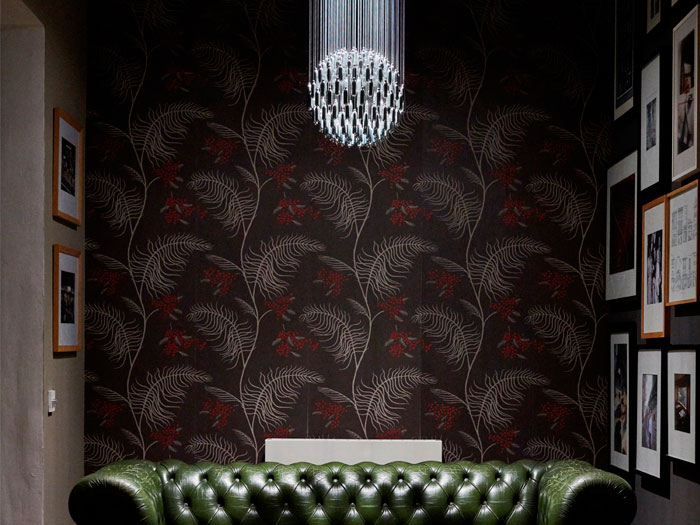
Looking back at the design process for NOS Sphere 228, Kavanagh explains to darc how working with discarded canisters quickly provided him with problems and a number of technical challenges. “I had to find the best way to consistently hang the canisters, getting the optimum scale and shape and then, balancing the finishes and most importantly, integrating the right lighting to show off the chandelier and illuminate a space," he says. "I think in the end I must have made six iterations of design before it felt right. As well as this, though at a glance the canisters look the same, they are from different sources around the world and vary dimensionally. The puncture holes are also randomly applied, so in order to hang them consistently - the best method was to machine and thread each one and then make a bespoke threaded insert from which they could be attached to the suspension line.”
The canisters also had varying degrees of damage through crushing, scratching and surface corrosion. As such, it was important that Kavanagh found a way of grading and treating them so that the end chandelier has a consistent and luxurious feel. "Most of the canisters are bright zinc-plated so in the end I selected only the canisters without dents or too much scratching and then polished each one,” he says. “This added a uniform sparkle but still reveals some of the character that they have from being recycled."
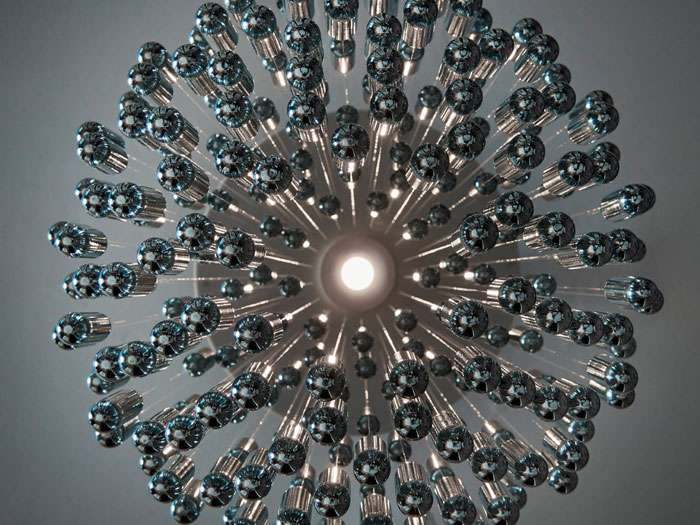
Kavanagh also didn’t want the light source to visually define the appearance of the chandelier and so chose a recessed LED spotlight fitting incorporated within the ceiling fixing; a high wattage dimmable GU10 lamp with a narrow beam was used so that the light was focused on the sphere.
“This had the effect of highlighting its decorative quality but had a couple of added benefits in that it produced a dispersed reflection from the canisters (like a subtle mirror ball) and created a dappled silhouette pattern on the floor below it,” he says. “Given the fluid quality of the suspended canisters any gentle movement in the chandelier is then animated.”
While each chandelier is handmade, requiring considerable craft input and relying on a source of recycled components, Kavanagh is keen to highlight that this is not a one-off creation, with the process designed to be repeatable and a production luminaire for specification in interior projects.
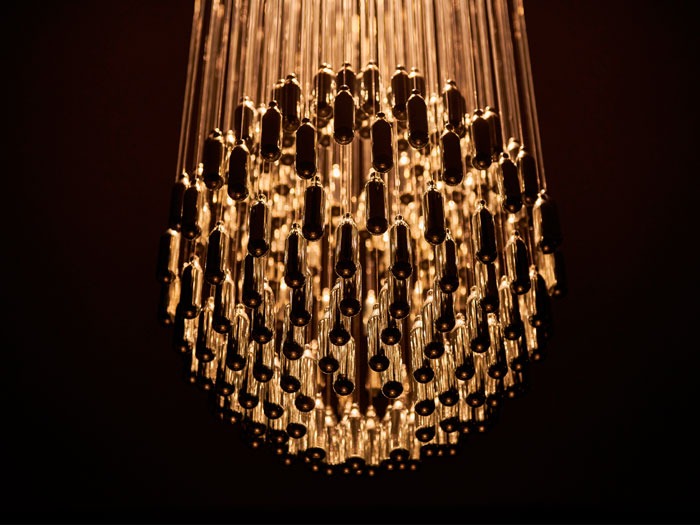
“The design also allows for further development of the concept," he says. "The first launch was the NOS Sphere 228, created with 228 canisters, the next is the NOS Sphere 348 with 348 canisters, nearly doubling the size of the chandelier. There are also variables to the finish that can be introduced, such as combining different grades of canister. You find some that have a pink coating and others that are painted. It adds further character to the chandelier to play with this mix. I’m looking at other finishes such as gold plating for a really 'bling' audience. Then there is an opportunity to undertake bespoke commissions to suit interior spaces."
For Kavanagh, good product design should include "form, function, emotion, use, and re-use," and as such is playing with the idea of using recycled cardboard in some products and lighting. Summing up his experience of working with light, he tells darc: "I find it a combination of conventional product design and playing with mood, in that the light you cast in a space can transform the function of the environment and the emotion of those who enter it."
www.diplomatdesign.com / www.space11.co.uk


